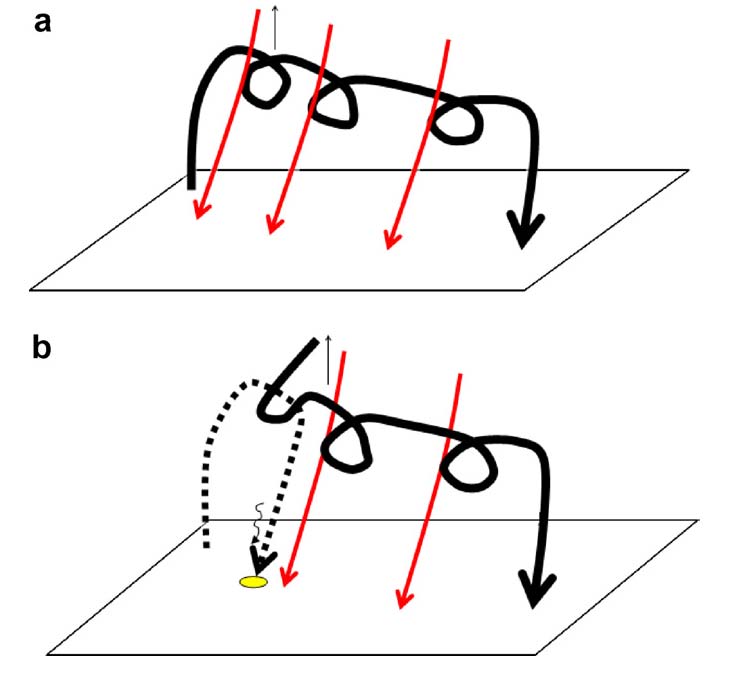
Pevtsov, Alexei A., K. S. Balasubramaniam, and Rachel A. Hock, Sequential chromospheric brightenings: The case for chromospheric evaporation, Advances in Space Research, 39, 1781-1786 (2007) (ADS)

(click on the image for a larger version)
Date: 2011 December 13
Update: 2019 November 27
Following a major flare, a pattern of bright points can appear in the neighboring chromosphere. These are the "sequential chromospheric brightenings," and they clearly relate in some manner to the large-scale development of the structure of a solar flare. But, in what particular manner? Is this related to the "flare nimbus" phenomenon? The authors find that these brightenings have a monopolar character and suggest chromospheric evaporation following the precipitation of electrons (or other particles. The Archivist also notes that Alfvén waves should also play a role. The cartoon envisions reconnection between an erupting flux rope (the thick black line) and previously-existing open field (red lines). An explanation of the unipolarity of the precipitation region isn't clear, since normally reconnection is thought of as a kind of bilateral thing. Maybe in this case there is some natural mechanism, unspecified here, for the asymmetry needed; for instance, the squiggly line at the brightening footpoint (yellow) might be at a different electrical potential?.